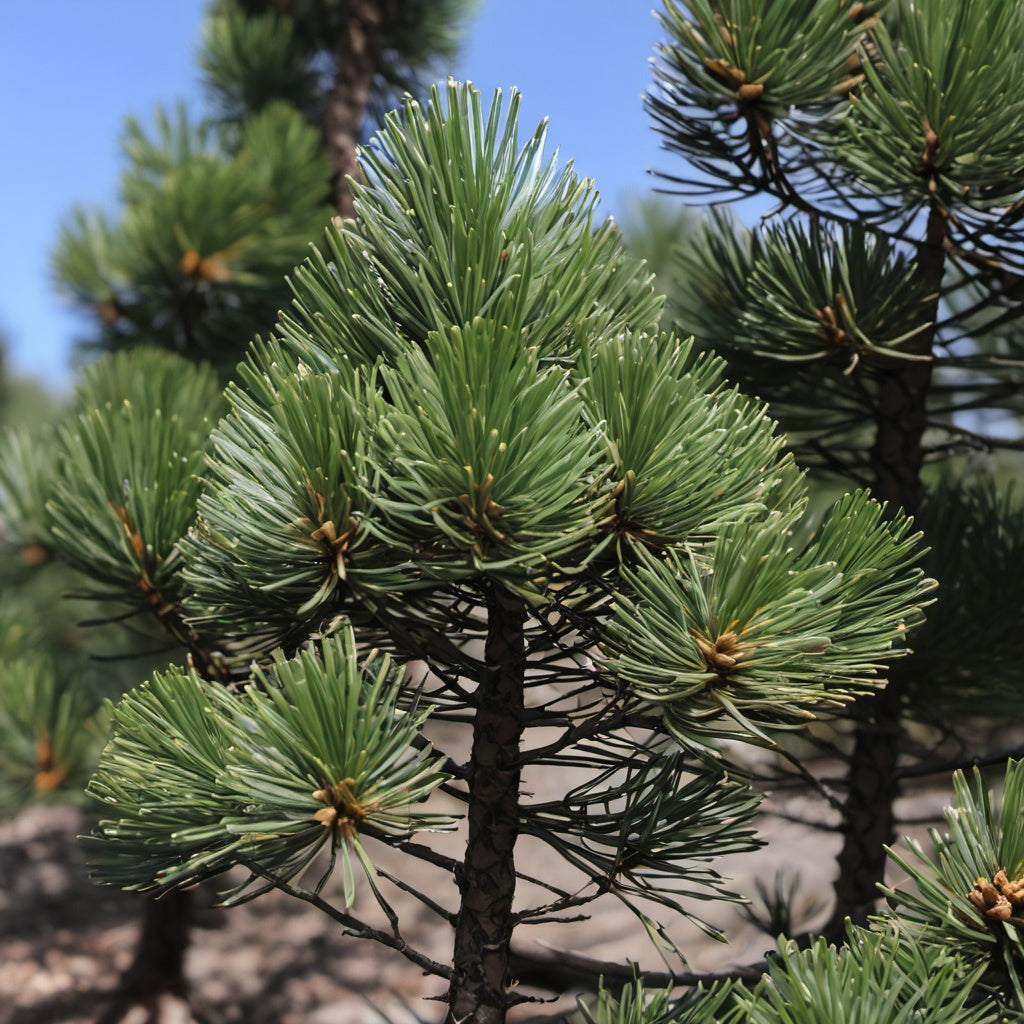Lacebark Pine Tree Seeds
Lacebark Pine Tree Seeds
Couldn't load pickup availability
Lacebark Pine Tree Seeds
(Pinus bungeana)
Pinus bungeana, commonly known as the lacebark pine, is a species of pine native to northern and central China. It is well-regarded for its distinctive, ornamental bark and has become popular in cultivation for its unique aesthetic qualities.
Appearance
- Bark: The most striking feature of the lacebark pine is its bark, which peels off in patches to reveal a beautiful, multicolored surface underneath. The bark changes colors as it matures, ranging from white, green, and purple to shades of red, brown, and gray.
- Needles: Its needles grow in bundles of three, which is somewhat uncommon among pines. They are around 5–10 cm (2–4 inches) long, slender, and dark green.
- Form: It is a small to medium-sized tree, typically growing 15–25 meters (49–82 feet) tall. It has a somewhat open and rounded crown and can develop multiple trunks.
Growth and Habitat
- Native Range: This species is native to the mountainous regions of China, where it grows at altitudes of 500–2,500 meters (1,600–8,200 feet).
- Growth Rate: It has a slow to moderate growth rate, which contributes to its longevity and dense wood.
- Soil and Climate: Lacebark pines prefer well-drained soils and can tolerate drought once established. They are hardy and adaptable, thriving in USDA Hardiness Zones 4–8.
Cultivation and Uses
- Ornamental Value: Its unique, patchy bark makes Pinus bungeana a popular choice for landscaping and ornamental use, especially in gardens and parks. The colorful bark is particularly attractive in winter when most other plants have lost their leaves.
- Cultural Significance: In China, it has been valued for centuries and often appears in temple gardens and other historic sites.
- Conservation: Although not endangered, the lacebark pine is considered vulnerable due to habitat loss and deforestation in its native range.
Symbolism and Cultural Meaning
- In traditional Chinese culture, the pine tree is a symbol of endurance, strength, and longevity. Pinus bungeana, with its enduring and unique appearance, is often associated with resilience and beauty.
Zones: 4 to 7
Germination Range: 70-90%
Stratification Requirement: Seed does best with a cold stratification of 7-14 days prior to Spring sowing. Germination may take 3-4 months.
Planting Instructions:
Lacebark Pine tree seeds have a natural dormancy period, which means they benefit from a cold stratification process. Start by soaking the seeds in water for 24 hours to hydrate them, which helps initiate germination. After soaking, drain the seeds and place them in a plastic bag with moist seed starting mix. Keep this bag in a refrigerator at around 4°C (39°F) for 7 to 14 days. This cold stratification mimics winter conditions, encouraging the seeds to break dormancy and prepare for germination.
Once the stratification period is complete, it’s time to sow the seeds. Choose a well-draining soil mix, preferably one designed for pine or conifer seedlings, as it provides the right balance of nutrients and drainage. Fill small pots or seed trays with this soil and press each seed gently into the surface, covering it lightly with soil, no more than 0.5 inches deep. Pinus bungeana seeds require a warm, sunny environment to germinate, ideally around 20–24°C (68–75°F), so place the pots in a location where they can receive indirect sunlight, or use a grow light if natural light is insufficient. Keep the soil consistently moist but not waterlogged, as excessive moisture can cause the seeds to rot.
Germination for Lacebark Pine can take several weeks to months, so be patient. Once the seedlings emerge, continue providing ample light and avoid direct, harsh sunlight to prevent burning the young plants. After the seedlings establish a healthy root system and grow a few inches tall, you can start acclimating them to outdoor conditions if you plan to plant them in the ground. Gradually expose them to outdoor temperatures and conditions by placing them outside for a few hours each day, increasing the duration over time. When they’re ready, choose a well-draining, sunny spot in your garden for transplanting. This species can grow in various soil types but prefers slightly acidic to neutral soil. With careful preparation and proper care, your Lacebark Pine trees will eventually become hardy, low-maintenance additions to your landscape, displaying their characteristic bark and evergreen foliage.
Share


